Past blogs:
Reworked blog Post
How can you ensure equitable access to authentic, meaningful & relevant learning environments for all learners in K-12 open and distributed learning contexts? What did you already know, what do you know now based on the course readings and activities, what do you hope to learn?
The environment is integral for cultivating an equitable learning experience that allows for meaningful and relevant learning to occur. Whether it is in a distributed or open learning environment there are techniques like the Universal Design For Learning (UDL), ways to accommodate and promote learning in the Indigenous communities, and considerations for online learning to cultivate an equitable and impactful online experience.
UDL was developed by Cast 20 years ago and is a guide that helps educators be flexible in their presentation of information, how students demonstrate knowledge and are engaged as well as, break the stigma and barriers in accomodations to help students with disabilites and ELL learners (Basham et al., 2018, p.477-478). Through three principles of “Multiple means of engagement, multiple means of action and expression, and multiple means of representation” educators create an environment that allows any student to thrive with “variability being the norm rather than the exception” (Basham et al., 2018, p.480).
The UDL website has a chart that outlines the nine subsequent guidelines with examples to help guide teachers. UDL can be implemented in a face-to-face or an online environment as online can offer opprotunities to implemnent UDL, such as individualized education (Basham et al., 2018, p.477).
Some online or open learning tools go hand in hand with UDL. In “both blended and full-time virtual settings” it was found that UDL based practice “improved both learner satisfaction and learning outcomes” (Basham et al. 2018, p.489). There has been research on parts of UDL, but more must be done to prove its entirety.
In an article by Kral & Schwab (2012), the eight principles to create an effective learning space for Indigenous learners of every age are explored (p.58):
- Space young people can control
- A space for hangout out and mucking around
- Space where learners learn
- A space to grow into new roles and responsibilities
- A space to practice oral and written language
- A Space to express self and cultural identity through multimodal forms
- A space to develop and engage in enterprise
- A space to engage with the world.
Overall it expressed the need for open learning resources, safe spaces to learn like libraries or cultural centres, providing autonomy over learning, providing schedules ahead of time, guiding enterprise experiences, and bridging the gap between elders and the young through technology, and the arts, to maintain cultural identity, all while stepping into an often unwelcoming world. By acknowledging and implementing these ideas in an online and, especially, open learning environment, educators will better engage, support, and educate Indigenous communities.
Finally, Selwyn (2020) explains how in the Covid-19 world educators have to consider data privacy, nurture greater online relationships, cultivate different online setting for different learners, be flexible and asynchronous, have heightened empathy for students, and recognize how taxing online learning is and that it is a new learning experience for students too.
Sketch note answering question raised by Heather: Extra blog resource
I further hope to understand how to make sure student engagement is still high in a more asynchronous learning style?
Below is a Padlet explaining further connections.
Optional Activities Summaries:
Week 1 (Webinar)
Attached is a mind map outlining notes from the webinar, connections to sources and learning outcomes, as well as an audio file describing the connections. I chose to do the webinar because I wanted to connect to my classmates, hear more about human centred learning and privacy in online learning.
Webinar mind map
Week 2 (Padlet)
Attached is a Screencastify video explaining my experience with Padlet and how I connected it to the course. I chose to do Padlet because I liked the open learning nature of it and the ability to ask peers, instructors and outside educators questions. It felt like a true open education experience.
Week 3 (Slack Conversation)
Attached is a sketch note and Screencasitfy outlining my experience with Slack. I chose the Slack conversation because I liked the closed forum idea; it was like twitter but only conversing with peers. Having the ability to share ideas, connect with classmates and explore were just a few of the reasons I chose to explore Slack.
Slack sketch note
Week 4 (Twitter Chat)
Attached is a fictional podcast where I talk about Twitter and my experience. I chose to do the Twitter chat because I wanted to see what Twitter was like, how a hosted conversation worked and how other outside sources/people could be part of the thread
Sources for new blog post
Basham, J.D., Blackorby, J., Stahl, S. & Zhang, L. (2018) Universal Design for Learning Because Students are (the) Variable. In R. Ferdig & K. Kennedy (Eds.), Handbook of research on K-12 online and blended learning (pp. 477-507). Pittsburgh, PA: Carnegie Mellon University ETC Press.
CAST (2018). Universal Design for Learning Guidelines version 2.2. Retrieved from http://udlguidelines.cast.org
First Nations Education Steering Committee (FNESC). (n.d.). Retrieved July 20, 2020, from http://www.fnesc.ca/
Kral, I. & Schwab, R.G. (2012). Chapter 4: Design Principles for Indigenous Learning Spaces. Safe Learning Spaces. Youth, Literacy and New Media in Remote Indigenous Australia. ANU Press. http://doi.org/10.22459/LS.08.2012 Retrieved from: http://press-files.anu.edu.au/downloads/press/p197731/pdf/ch041.pdf
Selwyn. N. (2020). Online learning: Rethinking teachers’ ‘digital competence’ in light of COVID-19.[Weblog]. Retrieved from: https://lens.monash.edu/@education/2020/04/30/1380217/online-learning-rethinking-teachers-digital-competence-in-light-of-covid-19
Regan, P., & Jesse, J. (2019). Ethical challenges of edtech, big data and personalized learning: Twenty-first century student sorting and tracking. Ethics and Information Technology, 21(3), 167-179. DOI: 10.1007/s10676-018-9492-2
Sources
Barbour, M & Labonte, R. (2018) An Overview of eLearning Organizations and Practices in Canada. In R. Ferdig & K. Kennedy (Eds.), Handbook of research on K-12 online and blended learning (pp. 600-616). Pittsburgh, PA: Carnegie Mellon University ETC Press.
Brendtro, L., Freado, M., James, A., & Admin. (n.d.). Reclaiming Youth at Risk. Retrieved July 28, 2020, from https://reclaimingyouthatrisk.org/
First Nations Education Steering Committee (FNESC). (n.d.). Retrieved July 20, 2020, from http://www.fnesc.ca/
Garrett Dickers, A. (2018) Social Interaction in K-12 Online Learning. In R. Ferdig & K. Kennedy (Eds.), Handbook of research on K-12 online and blended learning (pp. 509-522 ). Pittsburgh, PA: Carnegie Mellon University ETC Press.
Healthbleep.com.(2012, February 10). 1 15 The 3 As of motivation Alan McLean Learning and teaching
. YouTube. https://www.youtube.com/watch?v=hm66HF5Vz5I
Mularella. (2014, September 27). Using Padelt as a Formative Assessment Tool [Web log post]. Retrieved July 25, 2020, from https://spsedtech.wordpress.com/2014/09/27/padlet/#:~:text=Padlet%20(formerly%20known%20as%20Wallwisher,%2C%20photos%2C%20and%20even%20video!
Norman, S. (2018, March 12). 15 Ways To Use Twitter In Education (For Students And Teachers Alike). Retrieved July 27, 2020, from https://elearningindustry.com/15-ways-twitter-in-education-students-teachers
Principles of the Circle of Courage–Source: Used with permission. From Reclaiming Youth at Risk: Our Hope for the Future by Larry Brendtro, Martin Brokenleg, and Steve Van Bockern (pgs. 137-138). Copyright 1990 and 2002 by Solution Tree (formerly National Educational Service), 304 West Kirkwood Avenue, Bloomington, IN 47404, 800-733-6786, www.solution-tree.com.
Regan, P., & Jesse, J. (2019). Ethical challenges of edtech, big data and personalized learning: Twenty-first century student sorting and tracking. Ethics and Information Technology, 21(3), 167-179. DOI: 10.1007/s10676-018-9492-2
Roberts, V. , Blomgren, C. Ishmael, K. & Graham, L. (2018) Open Educational Practices in K-12 Online and Blended Learning Environments. In R. Ferdig & K.Kennedy (Eds.), Handbook of research on K-12 online and blended learning (pp. 527–544). Pittsburgh, PA: Carnegie Mellon University ETC Press.

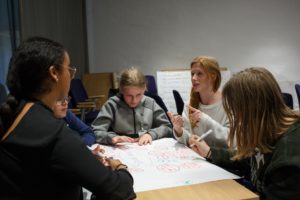
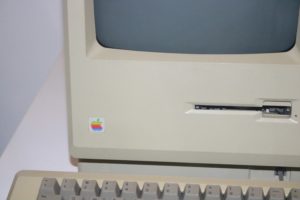
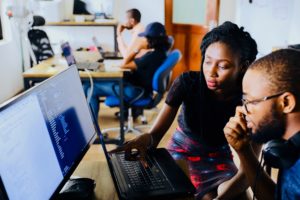
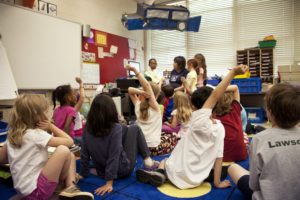 When I can have a connection with a teacher, feel comfortable asking questions, and feel understood and heard I am much more willing to take risks in my learning and to reach out for help. Having a teacher that is intimately involved with the learning that takes place transforms a learning experience, especially in an online setting. Providing opportunities for “connection to others in a learning space can contribute to satisfaction, enjoyment, and greater learning” (Garret Dikkers, 2018, p. 512). Collaborative experience help to stimulate learner-learner interactions and learner-instructor interactions, which help to create a sense of community when online.
When I can have a connection with a teacher, feel comfortable asking questions, and feel understood and heard I am much more willing to take risks in my learning and to reach out for help. Having a teacher that is intimately involved with the learning that takes place transforms a learning experience, especially in an online setting. Providing opportunities for “connection to others in a learning space can contribute to satisfaction, enjoyment, and greater learning” (Garret Dikkers, 2018, p. 512). Collaborative experience help to stimulate learner-learner interactions and learner-instructor interactions, which help to create a sense of community when online. By creating discussion boards, web conferences, encouraging social networking, and providing curated, purposeful lessons, educators help to build relationships in an online setting (Garret Dikker, 2018, p. 515). It is important to note, in all of these examples, the “importance of mitigating risk, psychological safely, appropriate teacher-student interaction and protection of privacy” should always be considered (Garret Dikker, 2018, p. 516).
By creating discussion boards, web conferences, encouraging social networking, and providing curated, purposeful lessons, educators help to build relationships in an online setting (Garret Dikker, 2018, p. 515). It is important to note, in all of these examples, the “importance of mitigating risk, psychological safely, appropriate teacher-student interaction and protection of privacy” should always be considered (Garret Dikker, 2018, p. 516). 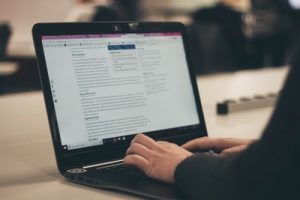 My one outstanding question is, how can these ideas be adapted to younger students who are too young to be on social networks and require more hands-on help and guidance when using online tools?
My one outstanding question is, how can these ideas be adapted to younger students who are too young to be on social networks and require more hands-on help and guidance when using online tools?